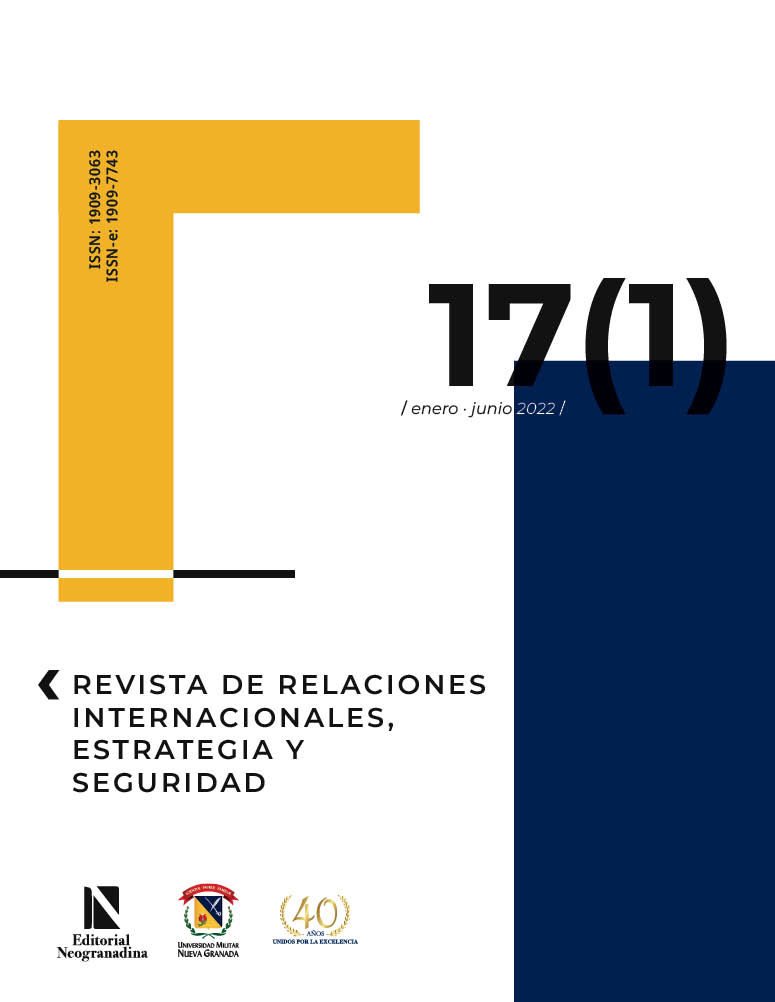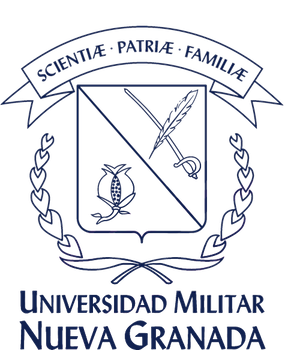La guerra de Georgia de 2008 y el proceso de transformación del Ejército Ruso
Resumen
la campaña llevada a cabo en 2008 por el Ejército Ruso en las regiones de Abjasia y Osetia del Sur, en Georgia, tuvo como objetivo la anexión de estas dos regiones con el objetivo estratégico de constituir una zona de contención para la implicación de la Organización del Tratado del Atlántico Norte (OTAN) en cuestiones de Oriente Medio. La valoración que hicieron las autoridades rusas tras el conflicto apuntaba a una posibilidad de transformación de las capacidades militares del Ejército Ruso. Se identificaron tres temas clave: tecnología de armas, tecnologías de información y comunicación y la estructura de fuerza empleada en la campaña de Georgia. Por lo tanto, el artículo se centra en un análisis de estos temas clave, así como los antecedentes que hicieron que las autoridades rusas se dieran cuenta de las necesidades de transformación de su ejército. Por tanto, se utiliza una investigación cualitativa basada en una revisión bibliográfica entre 2008 y 2014, además de la consulta de documentos primarios relacionados con la defensa y la seguridad rusas durante estos años.
Descargas
Referencias bibliográficas
Adamsky, D. (2008). Through the Looking Glass: The Soviet Military-Technical Revolution and the American Revolution in Military Affairs. Journal of Strategic Studies, 31(2), 257-294. DOI: https://doi.org/10.1080/01402390801940443
Barabanov, M., Tseluiko, V. e Lavrov, A. (2010). The Tanks of August (R. Pukhov, ed.). Centre for Analysis of Strategies and Technologies. http://www.cast.ru/files/The_Tanks_of_August_sm_eng.pdf
Bartles, C. (2011). Defense Reforms of Russian Defense Minister Anatolii Serdyukov, 24(1), 55-80. DOI: https://doi.org/10.1080/13518046.2011.549038
Beehner, L., Collins, L., Ferenzi, S., Person, R. e Brantly. A. (2008). Analyzing the Russian Way of War. Modern War Institute. https://mwi.usma.edu/wp-content/uploads/2018/03/Analyzing-the-Russian-Way-of-War.pdf
Blank, S. (2009). America and the Russo-Georgian War. Small Wars & Insurgencies, 20(2), 425-451. DOI: https://doi.org/10.1080/09592310902975547
Boltenkov, D., Tseluiko, V., Lavrov, A. e Kamaukhov, A. (2011). Russia’s New Army. Center for Analysis of Strategies and Technologies.
Carafano, J., Bromund, T., Cheng, D., Coffey, L., Curtis, L. et al. (2015). U.S. Comprehensive Strategy Toward Russia. The Heritage Foundation. https://www.heritage.org/europe/report/us-comprehensive-strategy-toward-russia
Civil.ge. (2008). UN Probe Says Russian Jet Downed Georgian Drone. Civil Georgia. https://old.civil.ge/eng/article.php?id=18393
Clausewitz, C. von (1989). On War (M. Howard. e P. Paret, trads.). Princeton University.
Cohen, A. e Hamilton, R. (2011). The Russian Military and the Georgia War: Lessons and implications. Strategic Studies Institute. https://www.files.ethz.ch/isn/130048/pub1069.pdf DOI: https://doi.org/10.21236/ADA545578
Connolly, R., e Boulègue, M. (2018). Russia’s New State Armament Programme Implications for the Russian Armed Forces and Military Capabilities to 2027. Chatham House. https://www.chathamhouse.org/sites/default/files/publications/research/2018-05-10-russia-state-armament-programme-connolly-boulegue-final.pdf
Connolly, R. e Sendstad, C. (2018). Russian Rearmament. Problems of Post-Communism, 65(3), 143-160. DOI: https://doi.org/10.1080/10758216.2016.1236668
Cornell, S. (2000). Small nations and great powers: A study of ethnopolitical conflict in the Caucasus. Routledge.
Covarrubias, J. G. (2007). Os três pilares da transformação militar. Military Review, 6, 16-24.
Coutau-Bégarie, H. (2011). Traité de stratégie. Economica.
Defense Intelligence Agency. (2017). Russia Military Power: Building a Military to Support Great Power Aspirations. Defense Intelligence Agency. https://www.dia.mil/portals/27/documents/news/military%20power%20publications/russia%20military%20power%20report%202017.pdf
Defense Talks. (2009). Georgian T-72 Column. Defence Talks. https://www.defencetalk.com/military/images/georgian-t-72-column.36625/
del Cid Gutiérrez, A. T. (2009). La OTAN y el conflicto Georgia-Rusia por Osetia del Sur. Revista de Relaciones Internacionales de la UNAM, 103(jan.-abril), 103-131.
Department of State. (2009). Georgia Train and Equip Program (GTEP). The Office of Electronic Information. https://2001-2009.state.gov/r/pa/ei/pix/b/eur/18737.htm
Donnelly, C. (1983). Supporting Paper: Soviet Operational Concepts in the 1980s. Em Strengthening Conventional Deterrence in Europe. Palgrave Macmillan. DOI: https://doi.org/10.1007/978-1-349-17082-1_4
Donovan Jr, G. (2009). Russian Operational Art in the Russo-Georgian War. U.S Army War College.
Duffy, C. (1981). Russia’s Military Way to the West. Routledge & Kegan Paul.
Frolov, A. (2011). Ispolneniie gosudartsvennogo oboronnogo zakaza Rossi v 2010 godu. Eksport Vooruzhenii, 1-43.
Glantz, D. (2012). Soviet Military Operational Art: In Pursuit of Deep Battle. Routledge. DOI: https://doi.org/10.4324/9780203043585
Grau, L. e Bartles, C. (2018). The Russian Way of War: Force Structure, Tactics, and Modernization of the Russian Ground Forces. Foreign Military Studies Office.
Haas, M. de, e Solheim, R. (2011). Russia’s Military Reforms Victory After Twenty Years of Failure (?). Netherlands Institute of International Relations Clingendael.
Isserson, G. S. (2016). Isserson and the War of the Future: Key Writings of a Soviet Military Theorist (R. Harrison, trad.). McFarland.
Kashin, V. (2014). The State of Defense Innovation in Russia: Prospects for Revival?. IGCC Defense Innovation Briefs, 1-9. https://escholarship.org/uc/item/4g46d0z3
Kashin, V. (2021). Defense innovation in Russia in the 2010s. Journal of Strategic Studies, 0(0), 1-21. DOI: https://doi.org/10.1080/01402390.2021.1974172
Korotchenko, I. (2011). Debyut v Nizhnem Tagile: Modernizirovannyy tank T-90C. Voyenno-politicheskiy dnevnik Igorya Korotchenko. https://ikorotchenko.livejournal.com/274856.html
Kuvaldin, S. (2010). Armed Forces for a Modest Power. Russian Politics & Law, 48(3), 44-52. DOI: https://doi.org/10.2753/RUP1061-1940480304
Lavrov, A. (2010). Timeline of Russian-Georgian Hostilities in August 2008. Em: R. Pukhov (ed.), The Tanks of August (pp. 37-75). Centre for Analysis of Strategies and Technologies. http://www.cast.ru/files/The_Tanks_of_August_sm_eng.pdf
Malmlöf, T. e Roffey, R. (2016). The Russian Defence Industry and Procurement. Em: G. Persson (ed.), Russian Military Capability in a Ten-Year Perspective (pp. 151-187). Swedish Defence Research Agency. https://www.foi.se/rest-api/report/FOI-R--4326--SE
Markoff, J. (2008, 12 de agosto). Before the Gunfire, Cyberattacks. New York Times. https://www.nytimes.com/2008/08/13/technology/13cyber.html
Mazzucato, M. (2013). The Entrepeneurial State: Debunking Public vs. Private Sector Myth. Anthem Press.
Mcdermott, R. (2009). The Restructuring of the Modern Russian Army. The Journal of Slavic Military Studies, 22(4), 485-501. DOI: https://doi.org/10.1080/13518040903355737
Mcdermott, R. (2014). The Brain of the Russian Army: Futuristic Visions Tethered by the Past. The Journal of Slavic Military Studies, 27(1), 4-35. DOI: https://doi.org/10.1080/13518046.2014.874840
Moran, M. (2006). Modern Military Force Structures. Council on Foreign Relations. https://www.cfr.org/backgrounder/modern-military-force-structures
Newman, L. H. (2018, 18 de janeiro). Menacing Malware Shows the Dangers of Industrial System Sabotage. https://www.wired.com/story/triton-malware-dangers-industrial-system-sabotage/?CNDID=50121752
Nichol, J. (2011). Russian Military Reform and Defense Policy. Congressional Research Service. https://sgp.fas.org/crs/row/R42006.pdf
Nilsson, N. (2021). Between Russia’s ‘Hybrid’ strategy and Western Ambiguity: Assessing Georgia’s Vulnerabilities. The Journal of Slavic Military Studies, 34(1), 50-68. DOI: https://doi.org/10.1080/13518046.2021.1923992
Oxenstierna, S. e Westerlund, F. (2013). Arms Procurement and the Russian Defense Industry: Challenges Up to 2020. The Journal of Slavic Military Studies, 26(1), 1-24. DOI: https://doi.org/10.1080/13518046.2013.757135
Pallin, C. V. e Westerlund, F. (2009). Russia’s war in Georgia: Lessons and consequences. Small Wars & Insurgencies, 20(2), 400-424. DOI: https://doi.org/10.1080/09592310902975539
Payne, K. B. e Foster, J. S. (2017). Russian strategy Expansion, crisis and conflict. Comparative Strategy, 36(1), 1-89. DOI: https://doi.org/10.1080/01495933.2017.1277121
Posen, B. (1984). The Sources of Military Doctrine: France, Britain, and Germany Between World Wars. Cornell University Press.
Rainow, P. (2013). If War Will Come Tomorrow. Em: S. Cimbala (ed.), The Russian Military into the 21st Century (pp. 30-50). Routledge.
Renaissanse — Information Bulletin of the International Association of Societies “Renaissance” (2011, 30 de setembro). Special issue. https://www.osce.org/odihr/83258?download=true
Renz, B. (2014). Russian Military Capabilities after 20 Years of Reform. Survival, 56(3), 61-84. DOI: https://doi.org/10.1080/00396338.2014.920145
Rezvani, B. (2020). Russian foreign policy and geopolitics in the Post-Soviet space and the Middle East: Tajikistan, Georgia, Ukraine and Syria. Middle Eastern Studies, 56(6), 878-899. DOI: https://doi.org/10.1080/00263206.2020.1775590
Robinson, L., Helmus, T. C., Cohen, R. S., Nader, A., Radin, A., Magnuson, M. e Migacheva, K. (2018). Modern Political Warfare. RAND Corporation.
Rússia. (2017). Doutrina Militar da Federação Russa de 2014 (T. C. J. R. C. Lopes, trad.). Escola de Comando e Estado-Maior do Exército.
Russia. (2014). The Military Doctrine of the Russian Federation. Ministry of Defence. https://rusemb.org.uk/press/2029
Seaton, A. (1979). The Russian Army of the Napoleonic Wars. Osprey Publishing.
Sinclair, N. (2016). The evolution — not revolution — of the Russian way of warfare. Military Review, maio/jun, 1-9.
Sinovets, P. e Renz, B. (2015). Russia’s 2014 Military Doctrine and Beyond: Threat Perceptions, Capabilities and Ambitions. NATO Research Paper, 1-12.
Socor, V. (2008). Russia Moves Toward Open Annexation of Abkhazia, South Ossetia. Eurasia Daily Monitor. https://jamestown.org/program/russia-moves-toward-open-annexation-of-abkhazia-south-ossetia/
Sutyagin, I. e Bronk, J. (2017a). I. Military Force as a Tool of Russian Foreign Policy. DOI: https://doi.org/10.1080/02681307.2017.1338465
Sutyagin, I. e Bronk, J. (2017b). II. Equipment, Organisational and Doctrinal Reforms of Land Forces. Whitehall Papers, 89(1), 43-88. DOI: https://doi.org/10.1080/02681307.2017.1338467
Sushentsov, A. e Neklyudov, N. (2020). The Caucasus in Russian foreign policy strategy. Caucasus Survey, 8(2), 127-141. DOI: https://doi.org/10.1080/23761199.2020.1759888
Svechin, A. (1992). Strategy (K. Lee, trad.). East View Information Services.
The Associated Press (2018, 20 de Agosto). Russian military on alert for massive war games said to be the largest since Soviet games in the ’80s. https://www.militarytimes.com/flashpoints/2018/08/20/russian-military-on-alert-for-massive-war-games-said-to-be-the-largest-since-soviet-games-in-the-80s/
Tseluiko, V. (2010). Present and Future of the Georgian-Russo Conflict: The Military Aspect. Em: R. Pukhov (ed.), The Tanks of August (pp. 77-98). Centre for Analysis of Strategies and Technologies. http://www.cast.ru/files/The_Tanks_of_August_sm_eng.pdf
Vorobyev, I. e Kiselev, V. (2010). Ground Troops Transition to Brigade Structure as a Phase of Improving Their Maneuverability. Military Thought, 2, 18-24.

Derechos de autor 2022 Revista de Relaciones Internacionales, Estrategia y Seguridad

Esta obra está bajo una licencia internacional Creative Commons Atribución-NoComercial-SinDerivadas 4.0.











